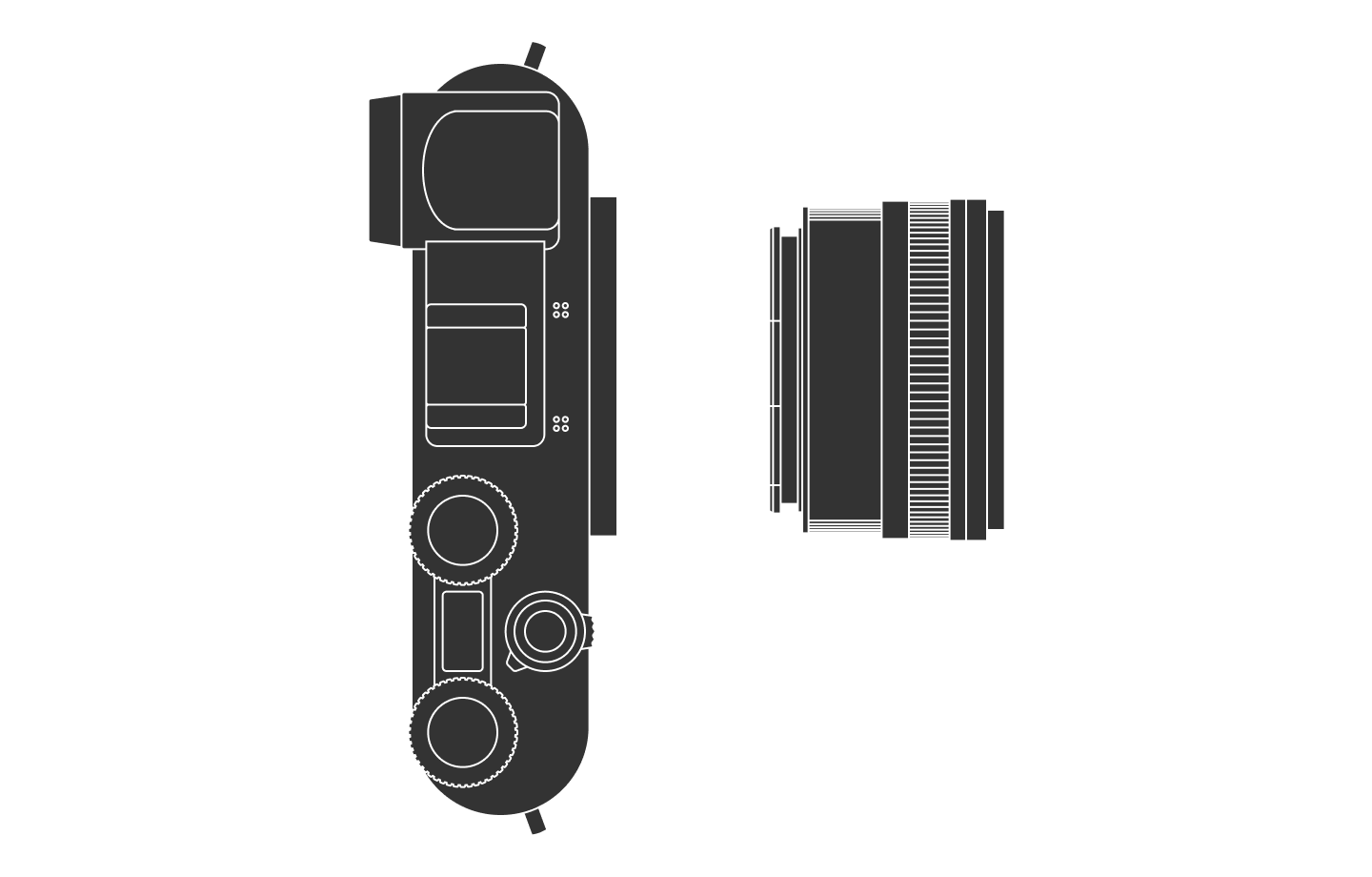
A visit to the Eames institute
5 min read May 30, 2024
Ray and Charles Eames are among the most influential modern designers. Their creative practice has touched us all, whether it be through films, exhibition design, or furniture. For me and many others, they showed how modernist design could be not just a way of working, but a way of life.
I was first introduced to them in school through the film Powers of Ten. The short film, in signature Eames style, elegantly investigates the sheer scale of life.
I later began noticing their name attached to everything from the now-famous IBM Pavilion in the New York World’s Fair to the seating in airports.
After Charles and Ray’s deaths, many photographs and drawings from their archives were sent to the Smithsonian Institution. Yet, warehouses full of prototypes, work materials, and art remained.
The Eames Institute of Infinite Curiosity was formed as a vessel meant to advance their legacy. Its aim is to share the Eames approach to problem-solving and inspire a new generation of creators.
Before the COVID-19 pandemic, the institute was gearing up to show visitors around their Eames Ranch (designed by William Turnbull Jr., famous for his work on Sea Ranch) in Petaluma. Today, while the Petaluma space is being renovated, their archive in Richmond, CA is open to the public for small group tours. The space, designed by Jim Jennings, previously served as a warehouse for William Stout Architectural Books.
Our visit
Given the demand for tour tickets, we had to log in right when a new batch of tickets appeared in order to secure ours.
On a cold, slightly overcast morning, we met up at a nondescript parking lot near the compact, white building. Aside from the Eames Institute sign out front, there wasn’t much hinting at historical artifacts within.
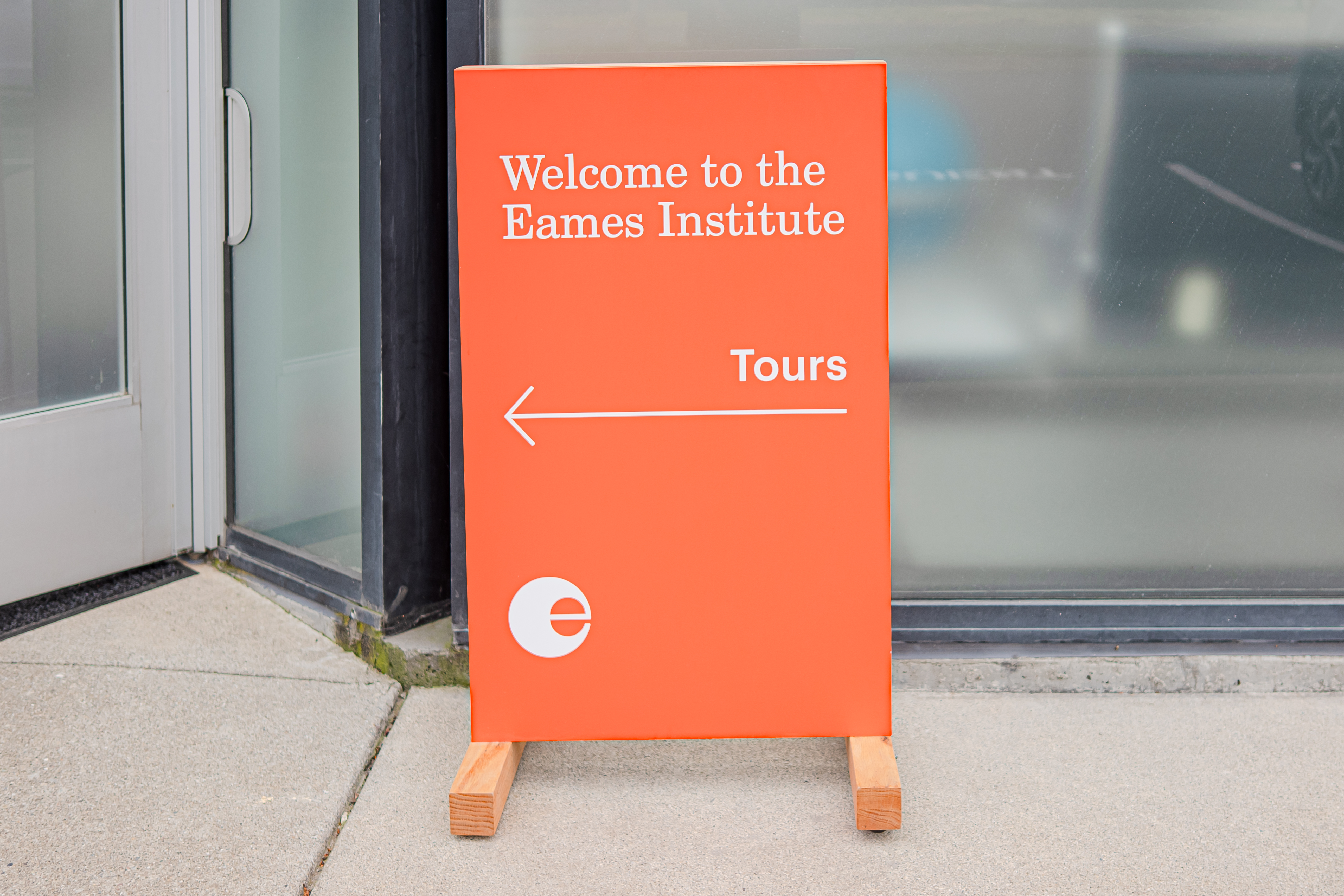 Leica CL · 23mm · f/2 · 1/1250 ·
ISO 100
Leica CL · 23mm · f/2 · 1/1250 ·
ISO 100
Inside the front door, we entered into a hybrid of lobby, museum, and gift shop. Behind the front desk was a Vestaboard displaying a colorful welcome message. On the desk were some pins with the Eames Institute E logo designed by Manual Creative that I was tempted to buy.
 Leica CL · 23mm · f/3.2 · 1/500 ·
ISO 100
Leica CL · 23mm · f/3.2 · 1/500 ·
ISO 100
 Leica CL · 23mm · f/2 · 1/1600 ·
ISO 100
Leica CL · 23mm · f/2 · 1/1600 ·
ISO 100
Large wooden crates played as display tables for books, new products, and curated items that Ray and Charles loved. All were for sale, and many in our group picked out an item or two to take home.
 Leica CL · 23mm · f/3.2 · 1/200 ·
ISO 100
Leica CL · 23mm · f/3.2 · 1/200 ·
ISO 100
 Leica CL · 23mm · f/2.8 · 1/400 ·
ISO 100
Leica CL · 23mm · f/2.8 · 1/400 ·
ISO 100
 Leica CL · 23mm · f/2 · 1/1000 ·
ISO 100
Leica CL · 23mm · f/2 · 1/1000 ·
ISO 100
The tour
As the scheduled time for our tour approached, we were joined by Llisa Demetrios, Chief Curator and granddaughter of Ray and Charles. If you are interested in her story, she gave a fantastic interview on the clever podcast.
As our tour guide, she was able to not just dive into the history of each piece on display, but reveal the human side to Ray and Charles.
Through the first set of doors in the lobby, we were led into a museum exhibition. The walls and cantilevered display cases hanging from them were chock-full of letters, drawings, artwork, and other two-dimensional work.
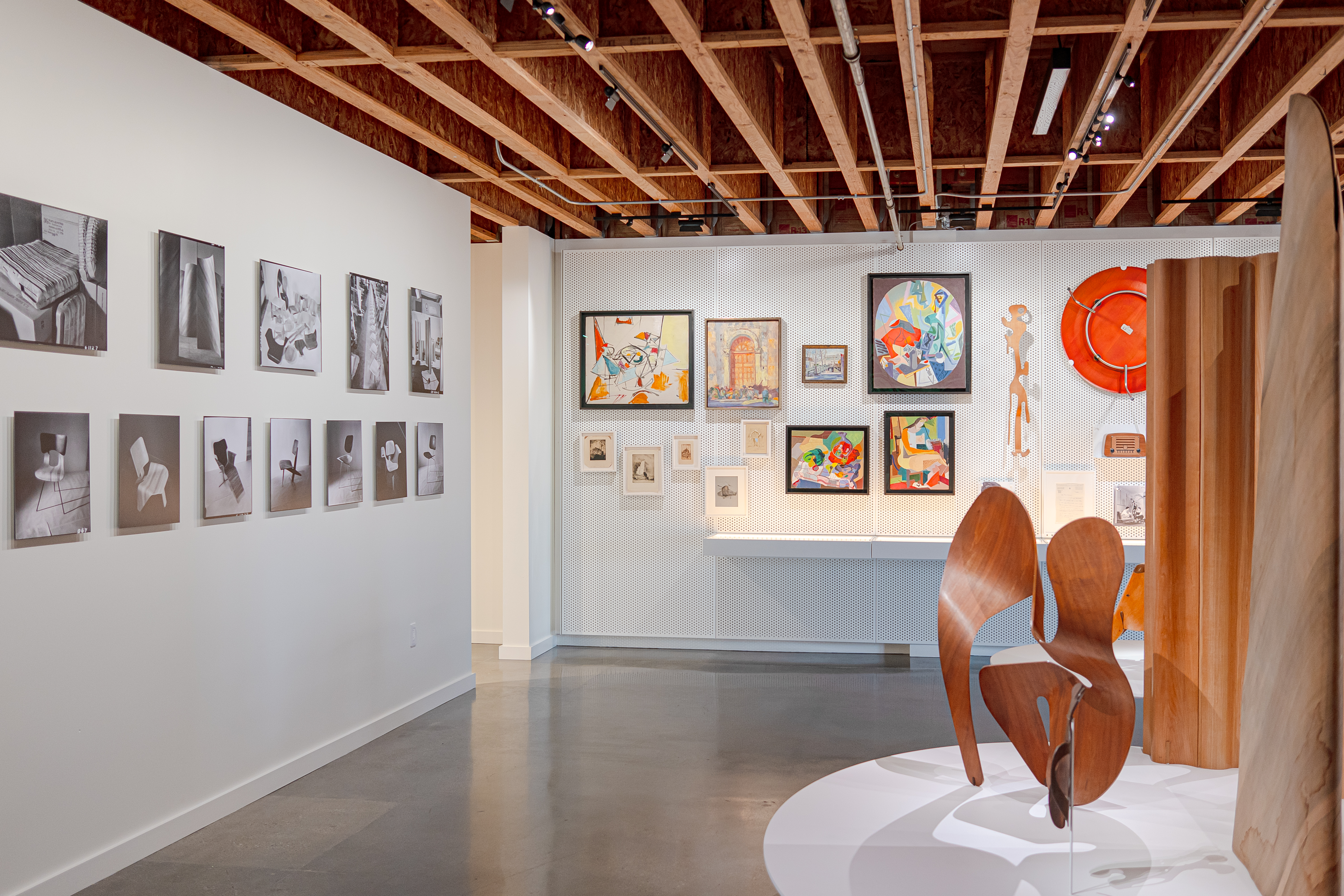 Leica CL · 23mm · f/2 · 1/60 ·
ISO 320
Leica CL · 23mm · f/2 · 1/60 ·
ISO 320
 Leica CL · 23mm · f/2 · 1/80 ·
ISO 100
Leica CL · 23mm · f/2 · 1/80 ·
ISO 100
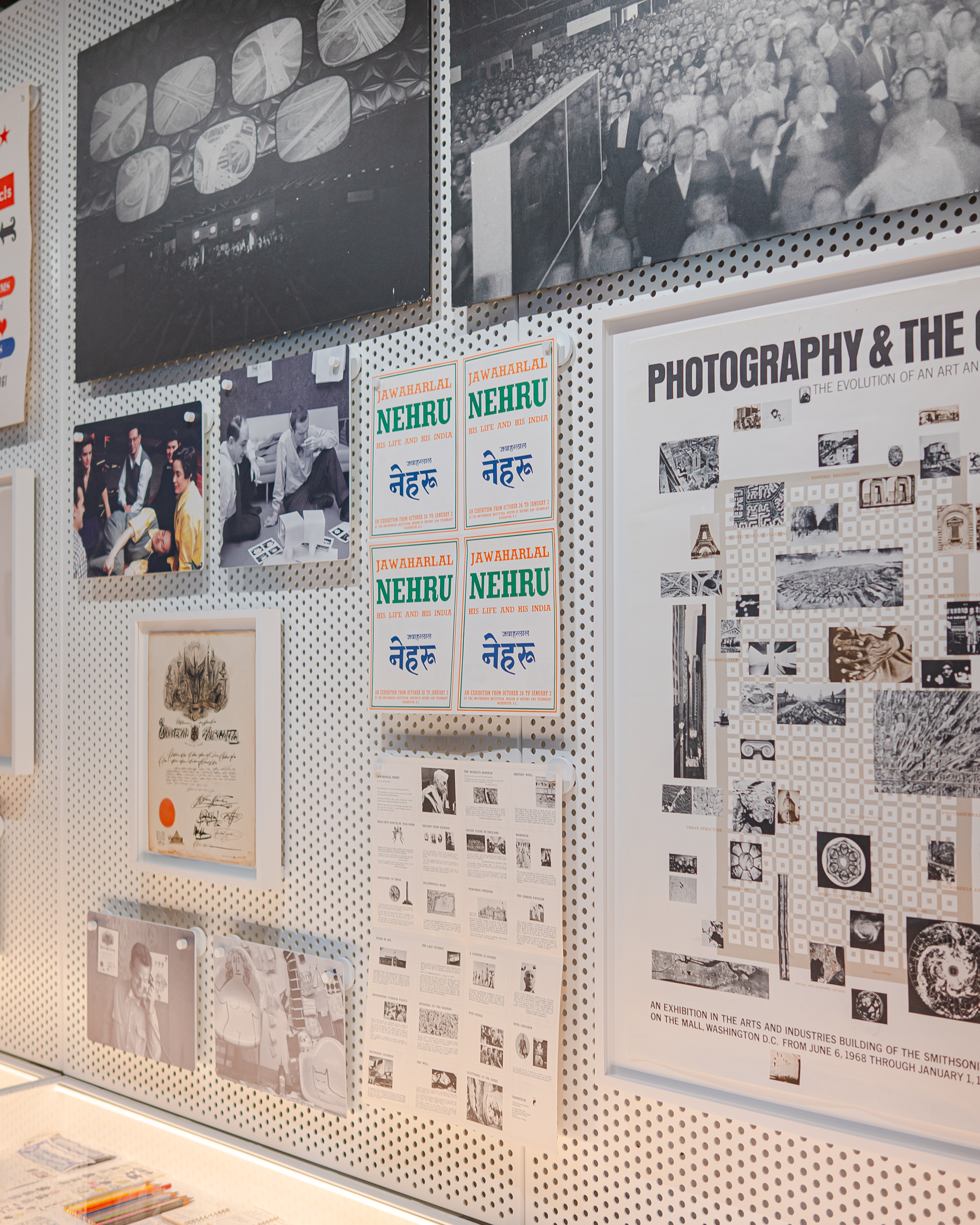 Leica CL · 23mm · f/2 · 1/60 ·
ISO 160
Leica CL · 23mm · f/2 · 1/60 ·
ISO 160
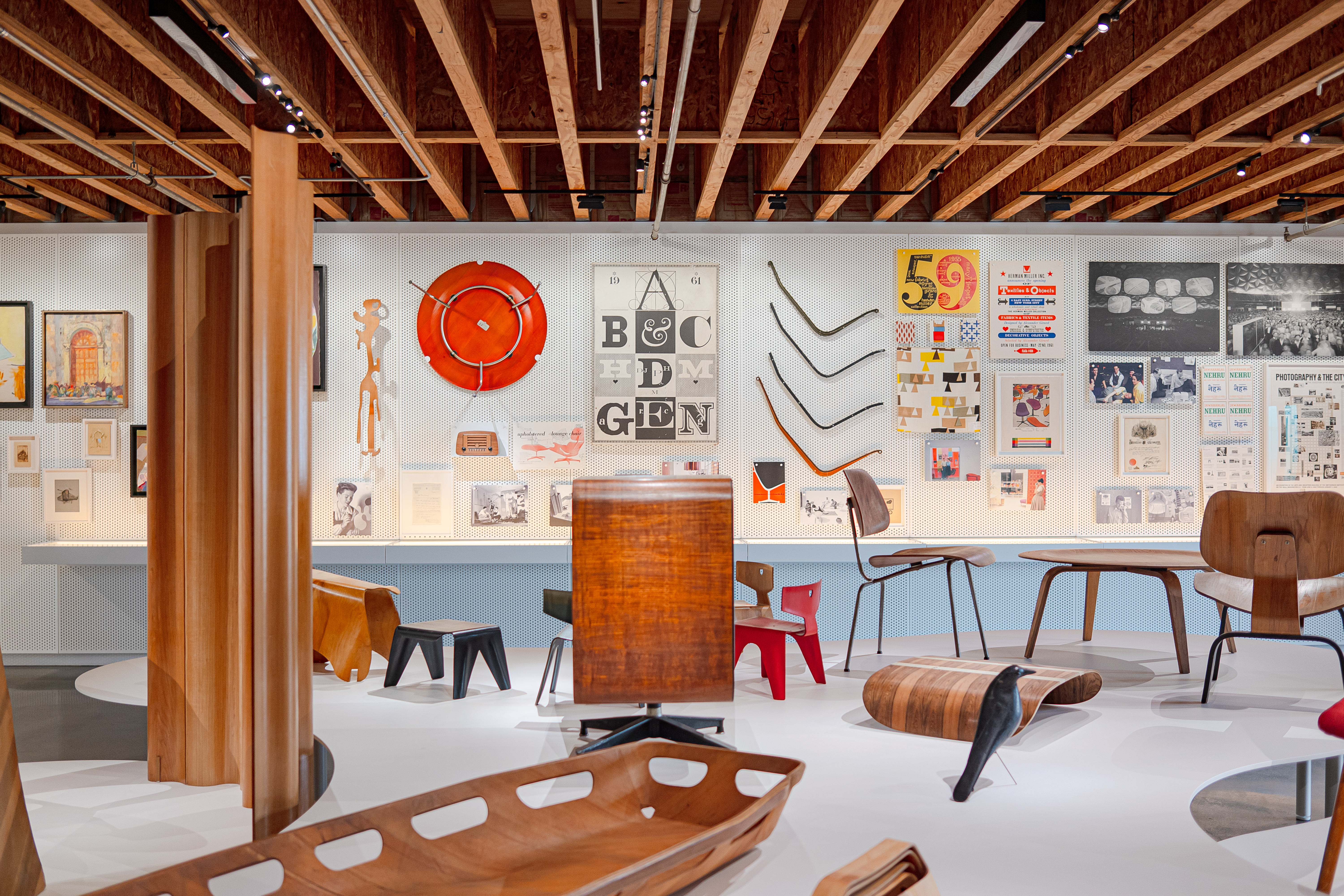 Leica CL · 23mm · f/2 · 1/60 ·
ISO 250
Leica CL · 23mm · f/2 · 1/60 ·
ISO 250
At the center, undulating tables housed a best hits collection of furniture and other three-dimensional work.
 Leica CL · 23mm · f/2 · 1/60 ·
ISO 320
Leica CL · 23mm · f/2 · 1/60 ·
ISO 320
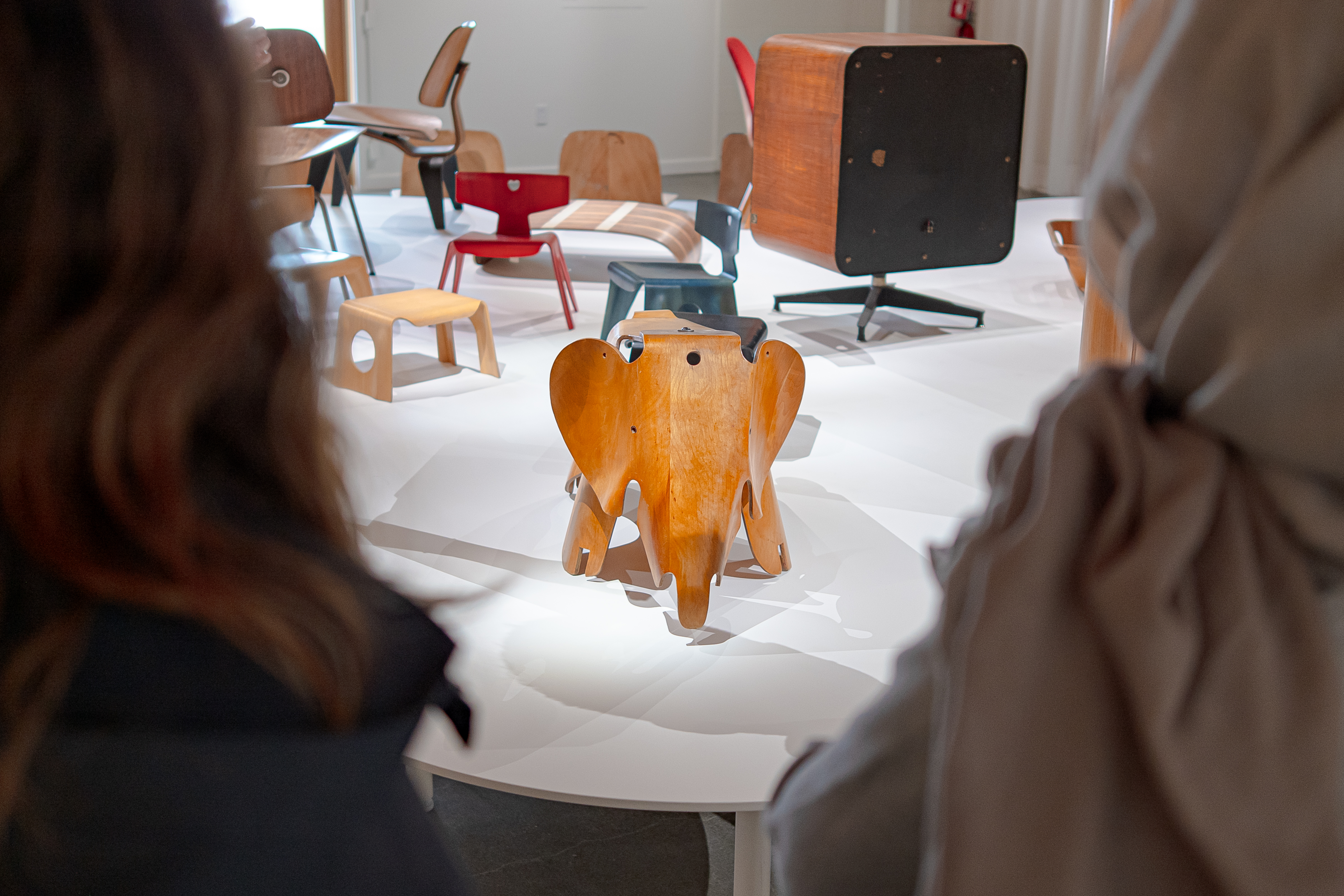 Leica CL · 23mm · f/2 · 1/60 ·
ISO 400
Leica CL · 23mm · f/2 · 1/60 ·
ISO 400
 Leica CL · 23mm · f/2 · 1/60 ·
ISO 400
Leica CL · 23mm · f/2 · 1/60 ·
ISO 400
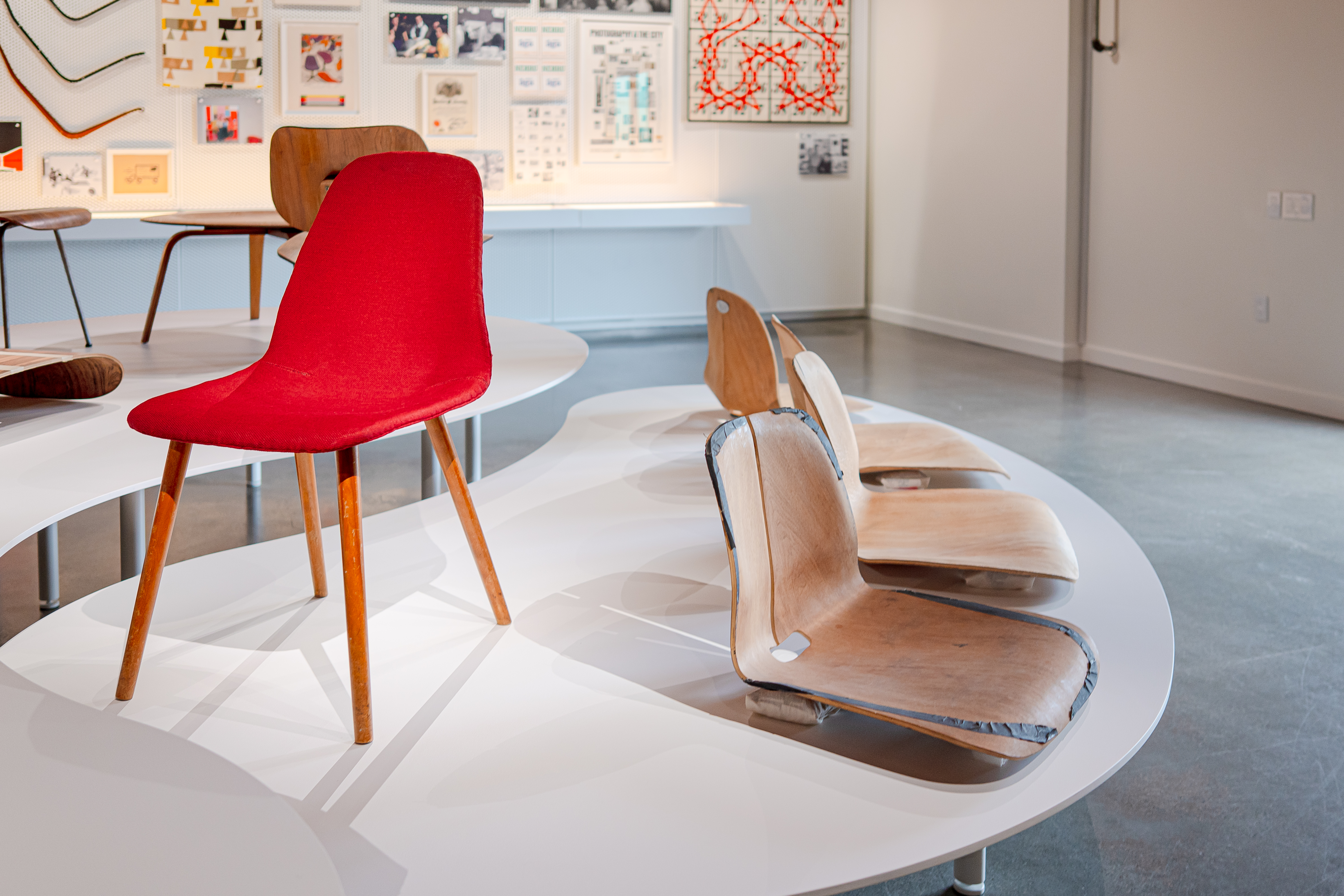 Leica CL · 23mm · f/2 · 1/60 ·
ISO 250
Leica CL · 23mm · f/2 · 1/60 ·
ISO 250
Then, as the tour continued, we entered through two more doors into a high-ceiling warehouse space with shelf upon shelf of furniture.
 Llisa Demetrios · Leica CL · 23mm
· f/2 · 1/60 · ISO 250
Llisa Demetrios · Leica CL · 23mm
· f/2 · 1/60 · ISO 250
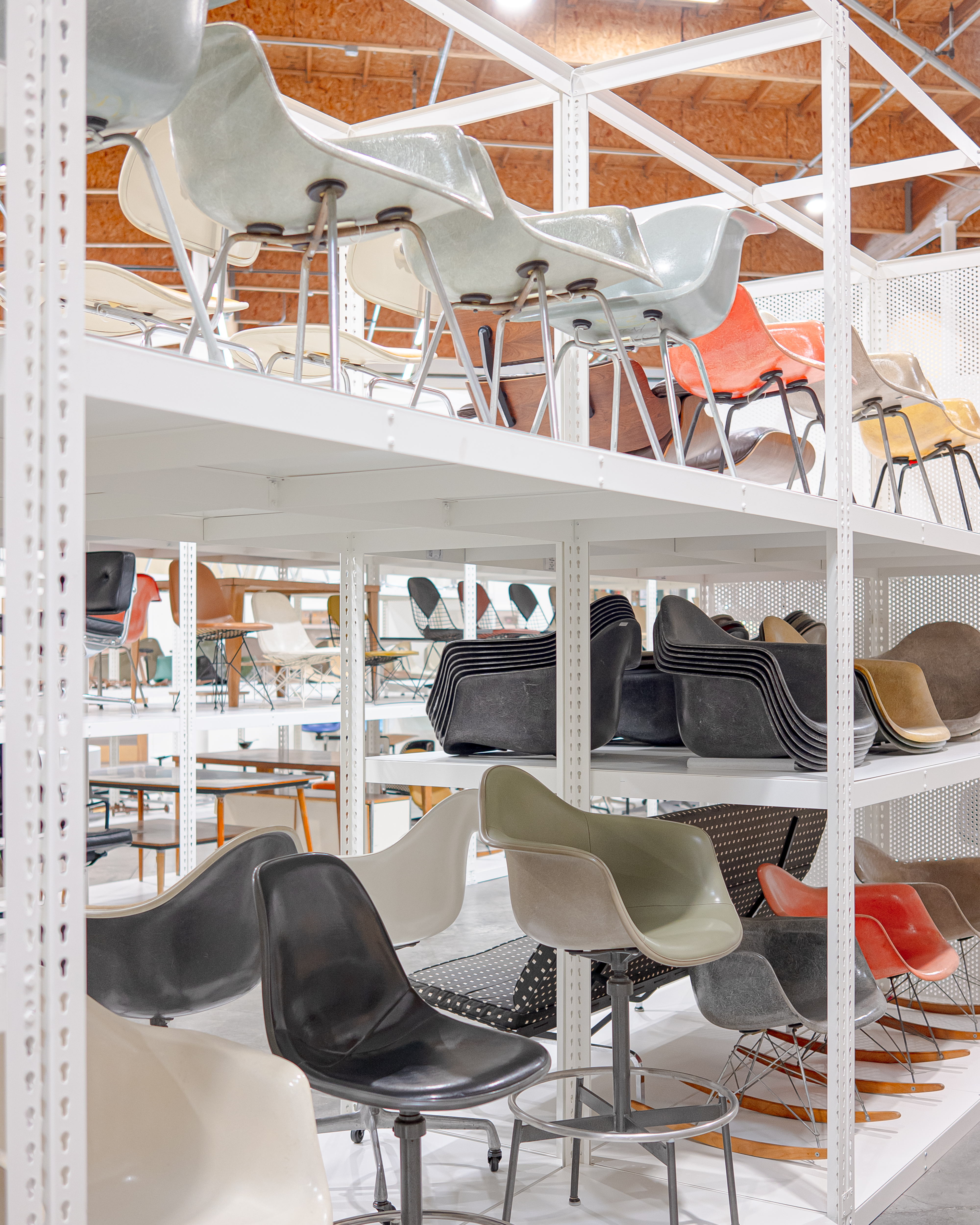 Leica CL · 23mm · f/2 · 1/60 ·
ISO 320
Leica CL · 23mm · f/2 · 1/60 ·
ISO 320
There were some remnants from exhibitions, and so many prototypes. I particularly loved how Llisa was able to show what was fixed at each prototype stage leading to now-iconic furniture.
 Leica CL · 23mm · f/2 · 1/60 ·
ISO 320
Leica CL · 23mm · f/2 · 1/60 ·
ISO 320
 Leica CL · 23mm · f/2 · 1/60 ·
ISO 250
Leica CL · 23mm · f/2 · 1/60 ·
ISO 250
 Leica CL · 23mm · f/2 · 1/60 ·
ISO 125
Leica CL · 23mm · f/2 · 1/60 ·
ISO 125
Finally, when our time was done, we returned to the exhibition space for one last thing. Curtains were pulled back and lights turned on to reveal a set of iconic Eames chairs. We were encouraged to sit in each one, making sure to note the ergonomic differences. There were even two Eames Lounge Chairs, both Herman Miller and Vitra versions, for us to compare.
Then, we sat as we watched the video version of the now famous Q&A about design with Charles.
Takeaways
At the end, my visit to the Eames Institute left me inspired, overwhelmed, and importantly, wanting more. Llisa was simply the best tour guide I could have imagined. No question stumped her and she was prepared to go as deep as we wanted.
I especially loved seeing the countless prototypes it took to get to a design that in the end looks so simple.
I only wish we had more time. I could have imagined spending twice as long in the exhibition space and warehouse. Of course, that is a good sign. It means that the Eames Institute still has much to offer us.
Thanks to Q for reading drafts of this.

